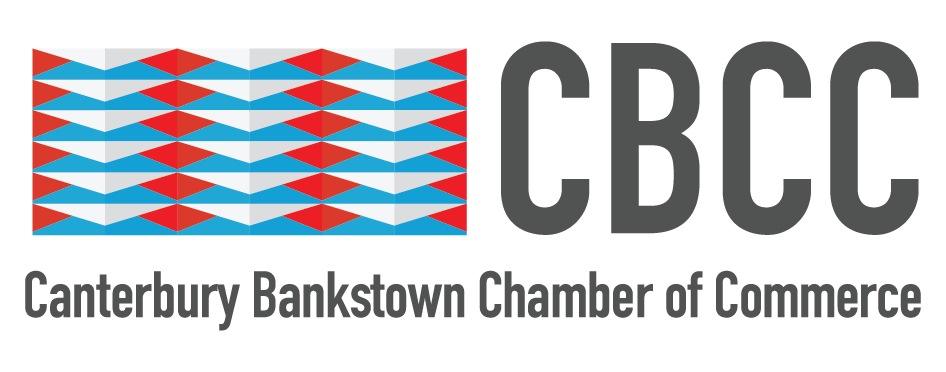Is The Language You Use Holding Them Back? | CBCC News
Have you ever noticed what language you use?
If you’re a man, you might notice that you use phrases that are direct and assertive, such as, “Based on my experience…”, “I’m confident that…”, or “We need to…”.
Conversely, if you’re a woman, you may find yourself using words that are more collaborative and inclusive language. “What do you think?”, “So I’m not an expert, but…”, “If everyone agrees…”. You might find yourself apologising for sharing your thoughts or intruding into conversations.
Although these language differences seem subtle, they contribute to an invisible wall that can prevent women from progressing further in their careers.
Why does this happen, and how can we use and understand language better to increase gender equality in our workplaces?
Women and 'Softer' Language
The term ‘soft language’ was first coined by George Carlin, an American comedian, who used it to describe euphemistic expressions that ‘conceal reality’ or ‘take the life out of life’. To him, ‘soft language’ is used to lessen discomfort by softening the impact of something shocking, crude, ugly, embarrassing, or similar.
Americans have trouble facing the truth. So they invent a kind of a soft language to protect themselves from it.
~ George Carlin, 1990
For women in the workplace, many adopt ‘soft language’ to reduce perceptions of being too direct and assertive to avoid seeming ‘bossy’.
Research by Byte reveals that 55% of women admit to ‘softening’ their digital exchanges with colleagues by employing emojis or a gentler tone, and this ‘softening’ increases the more women advance in their careers. In fact, over two-thirds of women in senior or executive roles say it’s important to be well-liked, rather than in control.
Tara Mohr, an expert on women’s leadership and well-being, discusses this in her best-selling book, Playing Big: Practical Wisdom for Women Who Want to Speak Up, Create, and Lead. In it, she points out the adjustments women make in their language during workplace interactions, revealing that women often frame their speech to come across non-threatening or approachable to sound more likeable, or to help them be heard in situations. However, it can conversely come across as apologetic, astonished, or even uncertain.
For example:
- “I just wanted to check…” – The use of “just” can make statements appear less assertive and more apologetic, watering down the speaker’s intent.
- “I actually think…” – The word “actually” might make it seem like the speaker is surprised at their own opposing opinion.
- “I may be wrong, but…” or “I’m not an expert…” or “Correct me with I’m wrong…” – Using qualifiers to start their speech can convey uncertainty and lack of confidence, potentially diminishing the speaker’s stance, and inviting others to speak over them and dismiss their suggestions.
- “Does that make sense?” – Although this is intended to ensure clarity and comprehension, these phrases can also make listeners think that the speaker has self-doubt in their thoughts and need someone to validate and support their opinions.
These phrases, and many more, can lead to the speaker’s insights being underestimated, and more often than not, it is women who use these phrases most.

Why Does This Happen?
Research has shown that women who use ‘soft language’ have sometimes been more direct communicators earlier in their careers, however, have been told that they are difficult to approach or even aggressive. Although women may be seen as strong leaders when they move away from gender stereotypes, they may become disliked by their colleagues. Yet, when they soften their language, they are often seen as less strong and their leadership and skills questioned.
Another reason why women use this sort of language is due to self-doubt, insecurity, or fear. As we explored in our previous blog, unconscious biases can be internalised, affecting the way women perceive their own abilities and skills. This can lead to ‘double-voiced discourse’, where the speaker assumes someone will negatively respond to what they will say and thus use qualifiers to mitigate risks and overcome their insecurities.
In The Language of Female Leadership, Dr Judith Baxter revealed that women are four times more likely to use ‘Out-of-Power’ language, which minimises the speaker’s contributions before anyone or anything else has the opportunity. For example, women may apologise for holding an opinion that others disagree with, or attribute their success to ‘getting lucky’ rather than their own hard work.
Lastly, women may use this pattern of language due to societal stereotypes or patterns of speech they have heard from childhood from their parents, grandparents, teachers, and other role models.
Are These Language Patterns Limited To Women?
So… do men not use these language patterns then?
When we go deeper into the research, evidence shows that, yes, there are men who do use these language patterns. However, they are perceived differently than when the same language is used by women.
For example, when a man uses qualifying phrases such as “Correct me if I’m wrong…”, people think that the man is asserting that they are right and that they are clarifying the situation. However, when a woman uses the same phrase, people are more likely to think that the woman is asking for validity and support.
This clearly indicates that a man who uses similar speech patterns don’t face the same level of scrutiny or the same interpretations as a women, highlighting just how much work needs to be done to truly make our workplaces an equal playing field.

How Do We Change?
The first and most important way that we can start creating positive change and encouraging more positive language use is to be authentic. Annette Harris, founder of leadership consulting firm ShowUp!, shares that people gravitate towards authenticity and can easily sense insincerity and insecurity. By showing real interest in supporting and uplifting your colleagues and acting on it, you can significantly enhance the work atmosphere to be more accepting, positive regardless of what language patterns people use.
For women who want to start changing their language use to be more assertive, it begins with a change in mindset. Believe that you deserve to be heard and be recognised, and that your work and skills are as important as everyone else in your workplace. Remove self-deprecating speech and replace it with language that supports you and your workmates. Use leading questions such as, “This is what I think. What do you think?” or “That’s a great idea. What about…?”. By encouraging discussion, staying positive, and lifting others up, you can create a stronger, more supportive work environment.
However, change shouldn’t just come from women adjusting their speech. If the aim is for women to be heard equally to men, it’s time to zoom in on the workplace culture and how women’s contributions are perceived.
Organisations play a pivotal role in driving this change. We need to begin creating a culture that values inclusivity and ensures women feel comfortable and valued for their authentic selves without modifying their language. And through that, we can make strides towards true equality. Workplaces should be somewhere where every voice is heard, respected, and valued equally, regardless of gender or experience.
The CBCC is dedicated to creating a business community that champions and celebrates authenticity. We aim to welcome all as they are and support them in their endeavours. Let’s make Canterbury-Bankstown the leading place where everyone feels welcome to live, work, study, and do business.








Customer Reviews
Thanks for submitting your comment!